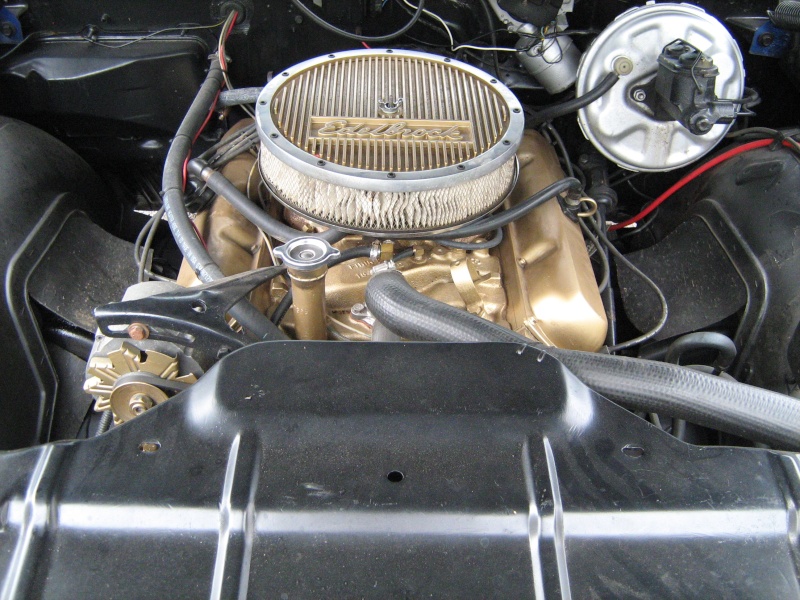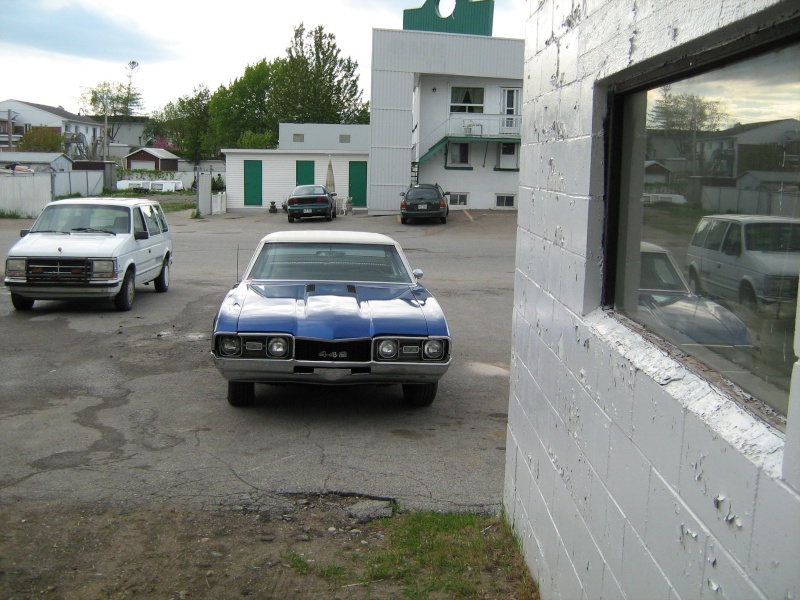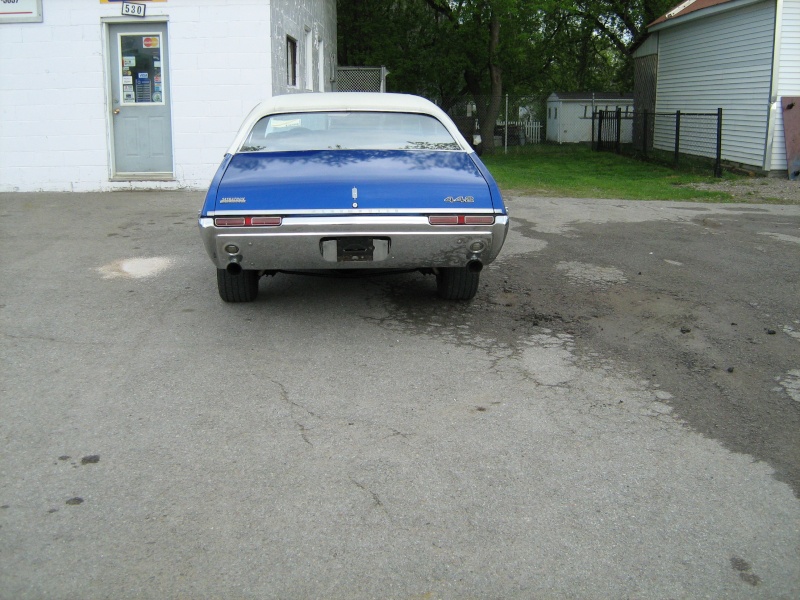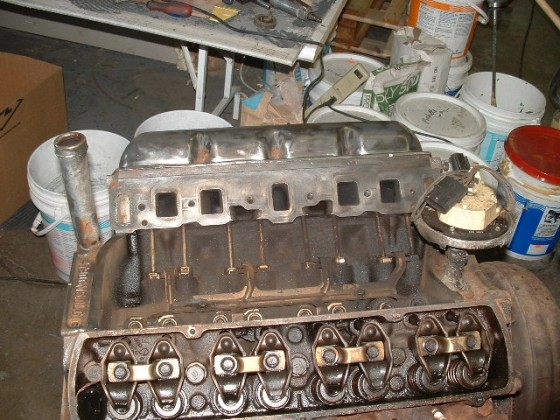350 rocket
+12
Biscayne1965
Batard
revving350
350 V8
Country-Boy
chevelleSS396
ADM
Fanamc
cobra429scj
Hamilton Motorsports
Dom
cutlass 442
16 participants
Tribune Auto :: Entretien :: Mécanique
Page 1 sur 2
Page 1 sur 2 • 1, 2 
 350 rocket
350 rocket
salut pourrier vous me dire la difference entre un 350 , un 350 rocket et un 350 ho merci

cutlass 442- Mordu

- Ville/Région : lac-st-jean
 Nombre de messages : 472
Nombre de messages : 472
Date d'inscription : 02/06/2008
 Re: 350 rocket
Re: 350 rocket
4 divisions de GM ont fait des 350, le plus commun Chevrolet, Pontiac, Oldsmobile appelé Rocket et Buick 
Pour la désignation H.O. c'est High Outpout, une version plus performante. PAr contre je ne me souveint pas d'avoir déjà vue des 350 H.O. de Chevy dans une voiture de production car de mémoire c'Est seullement au catalogue GM Performance part.
Chevrolet a fait de série des 305 H.O. dans les Camaro Z28, Pontiac Formula, Trans Am et Monte Carlo SS des années 80.
Pour la désignation H.O. c'est High Outpout, une version plus performante. PAr contre je ne me souveint pas d'avoir déjà vue des 350 H.O. de Chevy dans une voiture de production car de mémoire c'Est seullement au catalogue GM Performance part.
Chevrolet a fait de série des 305 H.O. dans les Camaro Z28, Pontiac Formula, Trans Am et Monte Carlo SS des années 80.

Dom- Bâtisseur
- Ville/Région : Rive-Sud de Montréal
 Nombre de messages : 11644
Nombre de messages : 11644
Date d'inscription : 23/04/2005
Voiture(s) : Trans Am 77, Mustang GT 09, Focus 07
 Re: 350 rocket
Re: 350 rocket
merci Dom pis tu as raison c est pas un 350ho mais bien 305 ho

cutlass 442- Mordu

- Ville/Région : lac-st-jean
 Nombre de messages : 472
Nombre de messages : 472
Date d'inscription : 02/06/2008
 Re: 350 rocket
Re: 350 rocket
Mais Dom dans les dernières années des Cutlass 442 et Hurst, les 5.0 lts étaient des 307 et étaient-ils H.O......du moins je pense à moins que je me trompe.......
_______________________________________________
Hamilton Motorsports
Chevrolet Camaro Z28 1986
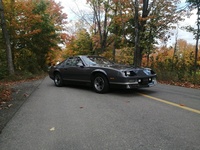
Hamilton Motorsports- Mordu

- Ville/Région : Lévis
 Nombre de messages : 461
Nombre de messages : 461
Date d'inscription : 26/04/2008
Voiture(s) : Camaro Z28 1986, Sierra 1500 SLE 1994, Rally STX 1988, Civic 2006, Civic LX 2020, Intégra 2001 et Tercel 1997
 Re: 350 rocket
Re: 350 rocket
Je connais pas beaucoup ce modèle de Cutlass et le 307, je pense que c'était seullement le 305, ça serait à vérifier.

Dom- Bâtisseur
- Ville/Région : Rive-Sud de Montréal
 Nombre de messages : 11644
Nombre de messages : 11644
Date d'inscription : 23/04/2005
Voiture(s) : Trans Am 77, Mustang GT 09, Focus 07
 Re: 350 rocket
Re: 350 rocket
Le 350 de chevrolet ne sont pas pareille au 350 d'un oldsmobile par exemple ..
L'intake n'etait pas fait pareil . dans le fond rien n'etait comparable .. Beaucoup de pieces n'etait pas interchangeable..
L'intake n'etait pas fait pareil . dans le fond rien n'etait comparable .. Beaucoup de pieces n'etait pas interchangeable..
_______________________________________________
cobra429scj ( alias Alex pour les intimes )

cobra429scj- Mordu

- Ville/Région : St-Zotique(Valleyfield)
Nombre de messages : 432
Date d'inscription : 23/01/2005
 Re: 350 rocket
Re: 350 rocket
--------------------------------------------------------------------------------
307 CID Engine Detail
--------------------------------------------------------------------------------
Submit corrections and additions to this information to The Olds FAQ Compiler.
General Information
Note: The information contained in all of the "Engine Detail" sections should be read before proceeding with modifications, etc., because some information that applies to all engines, or all small blocks or all big blocks, might not be duplicated in every section.
The 307 was built from 1980 through 1990, produced from 140hp to 180hp, and was installed in just about every car Olds built in that period at one time or another, including the Cutlass/442, Delta 88's, 98's and Toronados. It was also used in many Buick, Pontiac, Cadillac and Chevy models. You can get a quick estimate of the year of the engine by looking at the 1" high casting number on the lower-left corner of the block and/or head.
The 307 stayed carbureted until the bitter end of production (1990). Every 307 used a 4bbl carb - there were no 2bbl models. The last of the GM 4-bbl engines and the last GM carbureted engine. In fact, it came on the Caprice wagon, Olds Custom Cruiser wagon, Buick Estate wagon, and Cadillac Brougham (5.7L Chevy V-8 was optional on this one).
ESC (Electronic Spark Control) was added to 1988-90 307's. On these engines, the knock sensor is screwed into the driver's side coolant drain hole.
The 5A heads were used on the '80-'84 "conventional" (non roller) 307. The 6A and 7A heads fit the later ('85-'90) roller lifter 307s. The intake gasket sets are different.
There should not have been any factory installed 5A heads on '85 Toros. All should have been roller lifter engines with the 7A heads. The last year for "Y" code 307s with the conventional valvetrain was '84. (The "9" code continued to use the conventional valvetrain for another year or so.)
Some say the 307 H.O. engine has a propensity for detonation, because Oldsmobile always ran high timing (20 degrees advanced). Cracked or rusted A.I.R. tubes create a similar sound.
While a knocking noise probably means a spun bearing, check for loose bellhousing bolts and a cracked flexplate. Both times that this happened to me, the crack in the flexplate would snap back and forth, making a noise that I was convinced was a spun bearing. You may need to pull the converter back to properly see the flexplate.
Sometimes, the main intake-to-heads gasket goes bad, and coolant leaks out at the front of the engine, on the driver's side. The coolant dribbles down by the water pump, and the water pump appears to be bad. This seems to be a problem with the steel heads and intake mating to the aluminum intake.
[ Thanks to Kevin Wong, Frederick Nissen for this information. ]
VIN Y, VIN 9 Comparison
Here is the deal on heads, exhaust manifolds, & camshafts. This information comes from the 1982-1990 Oldsmobile B,C,D,E,G,X parts manual - 1998 version.
Year Part Number
Cylinder Head:
82-84 Y,9 22511238
85 9 Same (22511238)
85-90 Y 22530557
86-87 9 Same (22530557)
Camshaft:
82-84 Y 22521997
83-85 9 22519934
85-90 Y 22527149
86-87 9 22531804
Exhaust Manifolds:
83-90 Y 22503678 LH Cast Iron
83-87 9 Same (22503678) LH Cast Iron
85-87 Y 22530287 LH Tubular Welded Stainless
83-90 Y 22521449 RH Cast Iron
83-87 9 Same (22521449) RH Cast Iron
85-87 Y 22530286 RH Tubular Welded Stainless
So, in summary. The 82-85 VIN 9 and 82-84 VIN Y had 5A heads with regular cam, the 85-90 VIN Y and the 86-87 VIN 9 had 7A heads with roller cam. Notice the VIN Y changed to roller cam 1 year before VIN 9 which is causing some confusion.
Also, the tubular stainless exhaust manifolds were used on some 1985-90 VIN Y applications, but there is no set pattern. The stainless manifolds require a gasket, the cast iron do not. Finally, the GM Goodwrench remanufactured engine assembly numbers are different for tubular stainless vs. cast iron manifolds. I do not know what is specifically different, the book just says 1 is to be used with tubular, the other with cast iron.
[ Thanks to Steve Ochs for this information. ]
1985 442 307
The 442 "9" 307 engines, at least for 1985, did NOT have roller lifters. They utilized the standard hydraulic lifters. The "Y" engines used the rollers however. Why, I suppose we'll never know. Maybe it was because they had extra parts left over from the H/O project of 84, I don't know.
I have the 85 book, and it shows completely different procedures to remove pistons from rods, because the "Y" 307 has full floating wrist pins, and the "9" has press fit.
The cam in the 85 "Y" is roller, hence the cam button on the front of the cam to the front cover. Also, the lifters are specific to "Y" only (roller, duh! ). "9" has a .440/.440 lift cam, the "Y" is (forgot exact numbers) more like a .370/.390 lift on the cam. Much wimpier. The .440/.440 lift on the cam seems to be a new grind for Olds, the closest to it was like 69 and older, but I cannot remember on what. No clue on duration. I want to install a "9" cam into a 350, should make a nice cam matched to 3.42 gears!!
The heads have different grinding specs, but that could be carried over, so I cannot confirm what heads by the service manual as it does not list casting numbers. The "Y" has a 30 degree cut on valves, the "9" has 45, or vice versa. One is designed for better flow at higher lift. Typical for GM to do on high performance engines.
The carb is different in 85, the "Y" is 2 point adjust, the "9" is 3 point. Wish I knew what else was different!! The casting number on the carb is different.
Exhaust manifolds are cast iron on "9" engines, while they are tubular stainless steel for the "Y" 307. Although the cast iron "log" type manifolds have been seen on a 1985 "Y" 307 with 7a heads. I also pulled a set of cast iron manifolds off an early 80's Delta 88 with a 307 Y motor, 5a heads on that one.
Look in the book under engine rebuilding and see what you find to compare, the "9" gets a lot of listing differently. Note them and compare to "Y" 307. Much of what is found on the 307 "Y" is found on the "N" 350, "N" you say? Diesel!
[ Thanks to Mike Rothe, Thomas Martin, Bill Reilly for this information. ]
1986 - 1988 307
As for performance, the '86-'88 rwd Cutlasses had an engine optimized for low-end torque, so performance is great in the 500-3500rpm range; unfortunately, the factory engine is pretty much optimized for that range, so any additional "hot-rodding" would likely diminish performance, unless you changed *everything* (cam, heads, intake, exhaust, carb, etc).
If you plan on leaving it completely stock, then this won't be a problem; in fact, you can take pride in driving a factory "hot-rod", since that little 307 has all the tricks that you could possibly put in it to make low-rpm power (roller cam, swirl-port heads, tubular exhaust manifolds, tuned carb, OD transmission, etc). It's just that you can't get any more out of it; the factory already did what it could.
1986-88 vin 9 motors are roller lifter engines with swirl port (dinky) heads. The swirl port was Olds answer to fuel economy. It was a totally designed intake port combustion area.
The intake ports are small and raised, and the head ports on the intake side have spiral runners cast into the valve pocket area (sort of like a spiral staircase). The pistons have a horseshoe looking dish on top. All designed to promote port velocity at low rpm, and give the intake charge a "swirl" to promote velocity and atomization of the fuel air mixture. The exhaust port is smaller also (compared to previous 307 heads), and round. This did help economy and low end throttle response, but these cars are sort of pure slugs from the factory!
I bought an 87 442 new and have posted the story about getting dusted by a 4.3 S-10 pickup the night I drove it off the lot!!! i did "play" with mine, and got the swirl port to run low 15s, but it wasnt smog legal (eg. true duals w/no cats). The pre 1986 versions of the 307 have much more performance possabilities.
[ Thanks to Bob Barry for this information. ]
1987 - 1990 307
The VIN code 9 307 was available in full size Caddys. Actually they are quite common in the '87 to '90 Fleetwood RWD cars.
I have seen a few RWD Cadillacs with the VIN "9" 307, but they are not that common. Most got the regular "Y" engine. The cars I have seen with the "9" code engine were either equipped with the 5,000 lb tow package or were the "commercial chassis / coachbuilder package" sold to limo and hearse conversion firms.
[ Thanks to Tony Waldner, Frederick Nissen for this information. ]
307 vs other GM Engines
When looking at HP ratings, you should always look at the torque as well. This is important. Olds cammed the 307 to work with ultra high gearing. From 2.14 without OD, to 2.41 with OD. That is about 1300-1500 at 60 mph. Chevy engines have cylinder heads that do not flow well at low lift/low rpm levels. So hence the 2.73 gears on a 305. Most Chevy's did not get gearing like this. (Granted, a friend of mine had a 82 Chevy B_Body wagon with 267, 2bbl, OD and 2.56 gears!! Talk about a SLUG!) The same Cutlass would have 2.14's. Acceleration would be close to the same once moving.
In 1980 the 301 Pontiac was rated at 140 hp, the 305, 135 hp. The HO 301, 170 hp, the HO 305, 165 hp. The 301 Turbo 210 hp (345 ft lbs torque), while the 305 needed TPI and a roller cam to get there. And if anyone has ever seen 301 heads, you understand that the 301 was not a heavy breather! My Turbo 301 layed down at 4500 rpm, poor airflow. Pontiac designed it as a low rpm motor.
The Olds 307 (Y) was rated at 140 hp from 82-90, and the torque was 255 ft lbs. Seems to me it took a 305 to get TPI to get torque like that. HP is one thing, torque is Olds. Ask any 455 owner!! Can we say Brain Damaging??
Comparing Chevy's to Olds to Pontiac to ??? is like comparing oranges, apples and pears. Not at all alike unless you account they are all around 5.0L.
In GM corporate wisdom, there was a good reason to keep the 307 along as long as it did. Else it would have made way for the corporate slo-block, or the slo block would have made way for the Olds 307! (shared the same bore as the Buick 3.8L, hmm, cost savings on rings and maybe pistons???? hmmmmmmm). Saved money on tooling!
I always try to remember, GM does everything for a reason, it is not always sensible, but there is a reason. They want to make money, and having lots of engines around that are the same size is senseless.
[ Thanks to Thomas Martin for this information. ]
307 CID Engine Detail
--------------------------------------------------------------------------------
Submit corrections and additions to this information to The Olds FAQ Compiler.
General Information
Note: The information contained in all of the "Engine Detail" sections should be read before proceeding with modifications, etc., because some information that applies to all engines, or all small blocks or all big blocks, might not be duplicated in every section.
The 307 was built from 1980 through 1990, produced from 140hp to 180hp, and was installed in just about every car Olds built in that period at one time or another, including the Cutlass/442, Delta 88's, 98's and Toronados. It was also used in many Buick, Pontiac, Cadillac and Chevy models. You can get a quick estimate of the year of the engine by looking at the 1" high casting number on the lower-left corner of the block and/or head.
The 307 stayed carbureted until the bitter end of production (1990). Every 307 used a 4bbl carb - there were no 2bbl models. The last of the GM 4-bbl engines and the last GM carbureted engine. In fact, it came on the Caprice wagon, Olds Custom Cruiser wagon, Buick Estate wagon, and Cadillac Brougham (5.7L Chevy V-8 was optional on this one).
ESC (Electronic Spark Control) was added to 1988-90 307's. On these engines, the knock sensor is screwed into the driver's side coolant drain hole.
The 5A heads were used on the '80-'84 "conventional" (non roller) 307. The 6A and 7A heads fit the later ('85-'90) roller lifter 307s. The intake gasket sets are different.
There should not have been any factory installed 5A heads on '85 Toros. All should have been roller lifter engines with the 7A heads. The last year for "Y" code 307s with the conventional valvetrain was '84. (The "9" code continued to use the conventional valvetrain for another year or so.)
Some say the 307 H.O. engine has a propensity for detonation, because Oldsmobile always ran high timing (20 degrees advanced). Cracked or rusted A.I.R. tubes create a similar sound.
While a knocking noise probably means a spun bearing, check for loose bellhousing bolts and a cracked flexplate. Both times that this happened to me, the crack in the flexplate would snap back and forth, making a noise that I was convinced was a spun bearing. You may need to pull the converter back to properly see the flexplate.
Sometimes, the main intake-to-heads gasket goes bad, and coolant leaks out at the front of the engine, on the driver's side. The coolant dribbles down by the water pump, and the water pump appears to be bad. This seems to be a problem with the steel heads and intake mating to the aluminum intake.
[ Thanks to Kevin Wong, Frederick Nissen for this information. ]
VIN Y, VIN 9 Comparison
Here is the deal on heads, exhaust manifolds, & camshafts. This information comes from the 1982-1990 Oldsmobile B,C,D,E,G,X parts manual - 1998 version.
Year Part Number
Cylinder Head:
82-84 Y,9 22511238
85 9 Same (22511238)
85-90 Y 22530557
86-87 9 Same (22530557)
Camshaft:
82-84 Y 22521997
83-85 9 22519934
85-90 Y 22527149
86-87 9 22531804
Exhaust Manifolds:
83-90 Y 22503678 LH Cast Iron
83-87 9 Same (22503678) LH Cast Iron
85-87 Y 22530287 LH Tubular Welded Stainless
83-90 Y 22521449 RH Cast Iron
83-87 9 Same (22521449) RH Cast Iron
85-87 Y 22530286 RH Tubular Welded Stainless
So, in summary. The 82-85 VIN 9 and 82-84 VIN Y had 5A heads with regular cam, the 85-90 VIN Y and the 86-87 VIN 9 had 7A heads with roller cam. Notice the VIN Y changed to roller cam 1 year before VIN 9 which is causing some confusion.
Also, the tubular stainless exhaust manifolds were used on some 1985-90 VIN Y applications, but there is no set pattern. The stainless manifolds require a gasket, the cast iron do not. Finally, the GM Goodwrench remanufactured engine assembly numbers are different for tubular stainless vs. cast iron manifolds. I do not know what is specifically different, the book just says 1 is to be used with tubular, the other with cast iron.
[ Thanks to Steve Ochs for this information. ]
1985 442 307
The 442 "9" 307 engines, at least for 1985, did NOT have roller lifters. They utilized the standard hydraulic lifters. The "Y" engines used the rollers however. Why, I suppose we'll never know. Maybe it was because they had extra parts left over from the H/O project of 84, I don't know.
I have the 85 book, and it shows completely different procedures to remove pistons from rods, because the "Y" 307 has full floating wrist pins, and the "9" has press fit.
The cam in the 85 "Y" is roller, hence the cam button on the front of the cam to the front cover. Also, the lifters are specific to "Y" only (roller, duh! ). "9" has a .440/.440 lift cam, the "Y" is (forgot exact numbers) more like a .370/.390 lift on the cam. Much wimpier. The .440/.440 lift on the cam seems to be a new grind for Olds, the closest to it was like 69 and older, but I cannot remember on what. No clue on duration. I want to install a "9" cam into a 350, should make a nice cam matched to 3.42 gears!!
The heads have different grinding specs, but that could be carried over, so I cannot confirm what heads by the service manual as it does not list casting numbers. The "Y" has a 30 degree cut on valves, the "9" has 45, or vice versa. One is designed for better flow at higher lift. Typical for GM to do on high performance engines.
The carb is different in 85, the "Y" is 2 point adjust, the "9" is 3 point. Wish I knew what else was different!! The casting number on the carb is different.
Exhaust manifolds are cast iron on "9" engines, while they are tubular stainless steel for the "Y" 307. Although the cast iron "log" type manifolds have been seen on a 1985 "Y" 307 with 7a heads. I also pulled a set of cast iron manifolds off an early 80's Delta 88 with a 307 Y motor, 5a heads on that one.
Look in the book under engine rebuilding and see what you find to compare, the "9" gets a lot of listing differently. Note them and compare to "Y" 307. Much of what is found on the 307 "Y" is found on the "N" 350, "N" you say? Diesel!
[ Thanks to Mike Rothe, Thomas Martin, Bill Reilly for this information. ]
1986 - 1988 307
As for performance, the '86-'88 rwd Cutlasses had an engine optimized for low-end torque, so performance is great in the 500-3500rpm range; unfortunately, the factory engine is pretty much optimized for that range, so any additional "hot-rodding" would likely diminish performance, unless you changed *everything* (cam, heads, intake, exhaust, carb, etc).
If you plan on leaving it completely stock, then this won't be a problem; in fact, you can take pride in driving a factory "hot-rod", since that little 307 has all the tricks that you could possibly put in it to make low-rpm power (roller cam, swirl-port heads, tubular exhaust manifolds, tuned carb, OD transmission, etc). It's just that you can't get any more out of it; the factory already did what it could.
1986-88 vin 9 motors are roller lifter engines with swirl port (dinky) heads. The swirl port was Olds answer to fuel economy. It was a totally designed intake port combustion area.
The intake ports are small and raised, and the head ports on the intake side have spiral runners cast into the valve pocket area (sort of like a spiral staircase). The pistons have a horseshoe looking dish on top. All designed to promote port velocity at low rpm, and give the intake charge a "swirl" to promote velocity and atomization of the fuel air mixture. The exhaust port is smaller also (compared to previous 307 heads), and round. This did help economy and low end throttle response, but these cars are sort of pure slugs from the factory!
I bought an 87 442 new and have posted the story about getting dusted by a 4.3 S-10 pickup the night I drove it off the lot!!! i did "play" with mine, and got the swirl port to run low 15s, but it wasnt smog legal (eg. true duals w/no cats). The pre 1986 versions of the 307 have much more performance possabilities.
[ Thanks to Bob Barry for this information. ]
1987 - 1990 307
The VIN code 9 307 was available in full size Caddys. Actually they are quite common in the '87 to '90 Fleetwood RWD cars.
I have seen a few RWD Cadillacs with the VIN "9" 307, but they are not that common. Most got the regular "Y" engine. The cars I have seen with the "9" code engine were either equipped with the 5,000 lb tow package or were the "commercial chassis / coachbuilder package" sold to limo and hearse conversion firms.
[ Thanks to Tony Waldner, Frederick Nissen for this information. ]
307 vs other GM Engines
When looking at HP ratings, you should always look at the torque as well. This is important. Olds cammed the 307 to work with ultra high gearing. From 2.14 without OD, to 2.41 with OD. That is about 1300-1500 at 60 mph. Chevy engines have cylinder heads that do not flow well at low lift/low rpm levels. So hence the 2.73 gears on a 305. Most Chevy's did not get gearing like this. (Granted, a friend of mine had a 82 Chevy B_Body wagon with 267, 2bbl, OD and 2.56 gears!! Talk about a SLUG!) The same Cutlass would have 2.14's. Acceleration would be close to the same once moving.
In 1980 the 301 Pontiac was rated at 140 hp, the 305, 135 hp. The HO 301, 170 hp, the HO 305, 165 hp. The 301 Turbo 210 hp (345 ft lbs torque), while the 305 needed TPI and a roller cam to get there. And if anyone has ever seen 301 heads, you understand that the 301 was not a heavy breather! My Turbo 301 layed down at 4500 rpm, poor airflow. Pontiac designed it as a low rpm motor.
The Olds 307 (Y) was rated at 140 hp from 82-90, and the torque was 255 ft lbs. Seems to me it took a 305 to get TPI to get torque like that. HP is one thing, torque is Olds. Ask any 455 owner!! Can we say Brain Damaging??
Comparing Chevy's to Olds to Pontiac to ??? is like comparing oranges, apples and pears. Not at all alike unless you account they are all around 5.0L.
In GM corporate wisdom, there was a good reason to keep the 307 along as long as it did. Else it would have made way for the corporate slo-block, or the slo block would have made way for the Olds 307! (shared the same bore as the Buick 3.8L, hmm, cost savings on rings and maybe pistons???? hmmmmmmm). Saved money on tooling!
I always try to remember, GM does everything for a reason, it is not always sensible, but there is a reason. They want to make money, and having lots of engines around that are the same size is senseless.
[ Thanks to Thomas Martin for this information. ]
_______________________________________________
Je ne suis pas tout à fait inutile. Je peux toujours être utilisé comme un mauvais exemple.

Fanamc- Légende

- Ville/Région : St Prosper (Mauricie)
 Nombre de messages : 9181
Nombre de messages : 9181
Date d'inscription : 30/01/2007
Voiture(s) : Jaguar XJ12 1973 Ford 1926
 Re: 350 rocket
Re: 350 rocket
En lisant ce texte ça m'a fait penser que Pontiac aussi avait une version H.O. de leur 455 

Dom- Bâtisseur
- Ville/Région : Rive-Sud de Montréal
 Nombre de messages : 11644
Nombre de messages : 11644
Date d'inscription : 23/04/2005
Voiture(s) : Trans Am 77, Mustang GT 09, Focus 07
 Re: 350 rocket
Re: 350 rocket
merci pour l info le 305 ho etait dans mon nova75 c etait un rebil, dans mon 4-4-2 68 le gang m a dit que c etait un 350 rocket est que sa se voie a l oeil et pour quoi rocket

cutlass 442- Mordu

- Ville/Région : lac-st-jean
 Nombre de messages : 472
Nombre de messages : 472
Date d'inscription : 02/06/2008
 Re: 350 rocket
Re: 350 rocket
1968:
Authentication:
No 455's, only 400's.
The body data plate will not match the VIN. All 1968 442s have 344878... VINs, but the body data plates for those years will carry a 3687... designation. This is well documented and nothing to worry about. Similarly, the sequence number on the body data plate will not match the last six digits of the VIN (except in the event of an extreme coincidence), since these were Fisher Body numbers, not VINs. To sum up, while the body data plates on the 68-69 cars carried Cutlass body numbers, the VIN for a 68 442 must start out 344878.
Air cleaner housing: The correct color for all 4bbl 442's (non W-machines) is an Orange/Red. W cars had a black base and a chrome lid, and 2bbl 400 442's had a black air cleaner that was identical to the one used on 2bbl small block cars.
My 68 442 Conv has no model markings on the door panels, only on the glovebox door. Perforated diamond pattern on top of panels and flat from the armrests down, no carpet.
Made a subseries in itself, new body shape using GM's 112 inch wheelbase, a black mesh grid pattern grille (A Cutlass S should have a grille with vertical bars) with 442 identification. Production of the 442 for the 1968 model year was a record.
442s did not use an "Oldsmobile" script on the grille. Non-44s used a chrome OLDSMOBILE script on the left front corner of the hood on non-442s. 442s deleted the Olds script on the hood and used large 442 numerals on the grille. 442s will have a black plastic egg-crate grille, while non-442s will have a silver plastic grille with vertical bars.
Model Units
Sports Coupe 4282
Hardtop Coupe 24183
Convertible 5142
Total 33607
Engine Specs:
Standard: 400cu in, 4-bbl rochester, 10.50 CR, 350 hp@4800 (325 hp w/AT), 440 ft/lbs torque@3200
Forced-Air: 400cu in, 4-bbl rochester, 10.50 CR, 360 hp@5400, 440 ft/lbs torque@3600
Turnpike Cruiser: 400cu in, 2-bbl rochester, 9.0 CR, 290 hp@4600, 425 ft/lbs torque@2400
Transmissions:
Standard:
3 spd manual Hurst floor shifter
Optional:
4 spd manual close ratio Hurst floor shifter
4 spd manual wide ratio Hurst floor shifter
2 spd auto
floor shifter optional on auto with console
Rear Axles:
3spd 4spd wr 4spd cr Auto
350 hp: 3.23s,c 3.42s,n 3.91s,n
engine 3.08o,n 3.08o 3.42o,n
3.42o,n 3.23o,a,c 4.33o,n,d
3.91o,n 4.66o,n,d
4.33o,n
4,66o,n,d
325 hp: 3.08s,c
engine 3.31o,c
3.42o,n
3.91o,n
4.33o,n,d
4.66o,n,d
290 hp: 2.56s
engine 2.78o
3.08o,c
360 hp: 3.42o,n 4.33s,n,d,r 3.42s,n
engine 3.91o,n,d,r 4.33o,n,d,r
4.66o,n,d 4.66o,n,d
s = standard
o = optional
a = std w/air cond
n = not available w/air cond
c = canadian built cars have 2.78, 3.07, 3.31
instead of 2.73. 3.08 and 3.23 respectively
d = dealer installed
r = anti-spin diff. required
Performance Data:
W-30(a) 442 std. 442(b) L65(b)
hp@rpm 360@5400 350@4800 325@4800 290@4600
torque@rpm 440@3600 440@3200 440@3200 425@2400
displacement 400ci 400ci 400ci 400ci
comp. ratio 10.50-1 10.50-1 10.50-1 9.00-1
carb 4bbl 4bbl 4bbl 2bbl
exhaust dual single single single
Note:
(a): With force-air induction system
(b): Available with automatic transmission
"Car Life" - ¼ mile in 15.13 seconds at 92.2 MPH. 0 - 60 in 7.0 seconds.
Authentication:
No 455's, only 400's.
The body data plate will not match the VIN. All 1968 442s have 344878... VINs, but the body data plates for those years will carry a 3687... designation. This is well documented and nothing to worry about. Similarly, the sequence number on the body data plate will not match the last six digits of the VIN (except in the event of an extreme coincidence), since these were Fisher Body numbers, not VINs. To sum up, while the body data plates on the 68-69 cars carried Cutlass body numbers, the VIN for a 68 442 must start out 344878.
Air cleaner housing: The correct color for all 4bbl 442's (non W-machines) is an Orange/Red. W cars had a black base and a chrome lid, and 2bbl 400 442's had a black air cleaner that was identical to the one used on 2bbl small block cars.
My 68 442 Conv has no model markings on the door panels, only on the glovebox door. Perforated diamond pattern on top of panels and flat from the armrests down, no carpet.
Made a subseries in itself, new body shape using GM's 112 inch wheelbase, a black mesh grid pattern grille (A Cutlass S should have a grille with vertical bars) with 442 identification. Production of the 442 for the 1968 model year was a record.
442s did not use an "Oldsmobile" script on the grille. Non-44s used a chrome OLDSMOBILE script on the left front corner of the hood on non-442s. 442s deleted the Olds script on the hood and used large 442 numerals on the grille. 442s will have a black plastic egg-crate grille, while non-442s will have a silver plastic grille with vertical bars.
Model Units
Sports Coupe 4282
Hardtop Coupe 24183
Convertible 5142
Total 33607
Engine Specs:
Standard: 400cu in, 4-bbl rochester, 10.50 CR, 350 hp@4800 (325 hp w/AT), 440 ft/lbs torque@3200
Forced-Air: 400cu in, 4-bbl rochester, 10.50 CR, 360 hp@5400, 440 ft/lbs torque@3600
Turnpike Cruiser: 400cu in, 2-bbl rochester, 9.0 CR, 290 hp@4600, 425 ft/lbs torque@2400
Transmissions:
Standard:
3 spd manual Hurst floor shifter
Optional:
4 spd manual close ratio Hurst floor shifter
4 spd manual wide ratio Hurst floor shifter
2 spd auto
floor shifter optional on auto with console
Rear Axles:
3spd 4spd wr 4spd cr Auto
350 hp: 3.23s,c 3.42s,n 3.91s,n
engine 3.08o,n 3.08o 3.42o,n
3.42o,n 3.23o,a,c 4.33o,n,d
3.91o,n 4.66o,n,d
4.33o,n
4,66o,n,d
325 hp: 3.08s,c
engine 3.31o,c
3.42o,n
3.91o,n
4.33o,n,d
4.66o,n,d
290 hp: 2.56s
engine 2.78o
3.08o,c
360 hp: 3.42o,n 4.33s,n,d,r 3.42s,n
engine 3.91o,n,d,r 4.33o,n,d,r
4.66o,n,d 4.66o,n,d
s = standard
o = optional
a = std w/air cond
n = not available w/air cond
c = canadian built cars have 2.78, 3.07, 3.31
instead of 2.73. 3.08 and 3.23 respectively
d = dealer installed
r = anti-spin diff. required
Performance Data:
W-30(a) 442 std. 442(b) L65(b)
hp@rpm 360@5400 350@4800 325@4800 290@4600
torque@rpm 440@3600 440@3200 440@3200 425@2400
displacement 400ci 400ci 400ci 400ci
comp. ratio 10.50-1 10.50-1 10.50-1 9.00-1
carb 4bbl 4bbl 4bbl 2bbl
exhaust dual single single single
Note:
(a): With force-air induction system
(b): Available with automatic transmission
"Car Life" - ¼ mile in 15.13 seconds at 92.2 MPH. 0 - 60 in 7.0 seconds.
_______________________________________________
Je ne suis pas tout à fait inutile. Je peux toujours être utilisé comme un mauvais exemple.

Fanamc- Légende

- Ville/Région : St Prosper (Mauricie)
 Nombre de messages : 9181
Nombre de messages : 9181
Date d'inscription : 30/01/2007
Voiture(s) : Jaguar XJ12 1973 Ford 1926
 Re: 350 rocket
Re: 350 rocket
L'angle du "V" est différent et pour un oeil averti ca se voit bien et Rocket c'est le nom de Oldsmobile du moteur comme Cobra Jet , Magnum etc ... a moins que je me trompe !cutlass 442 a écrit:le gang m a dit que c etait un 350 rocket est que sa se voie a l oeil et pour quoi rocket

ADM- Administrateur

- Ville/Région : Reauce-Nord
 Nombre de messages : 13944
Nombre de messages : 13944
Date d'inscription : 16/09/2004
 Re: 350 rocket
Re: 350 rocket
ha c est bon a savoir c est tu pour quoi il fesait sa de meme c est pour donner plus de torque les piston doive etre un peut plus gros et les(bielles) bras un peut plus court pis t as raison il me paressait un peut plus large on le voit bien quant on regard intack en passant j ai acheter mon 4-4-2 par chez vous a princeville tu las peut etre deja vus je vais mettre des photos demain merci

cutlass 442- Mordu

- Ville/Région : lac-st-jean
 Nombre de messages : 472
Nombre de messages : 472
Date d'inscription : 02/06/2008
 Re: 350 rocket
Re: 350 rocket
Est-il complêtement d`origine ? à part le moteur 
_______________________________________________
Je ne suis pas tout à fait inutile. Je peux toujours être utilisé comme un mauvais exemple.

Fanamc- Légende

- Ville/Région : St Prosper (Mauricie)
 Nombre de messages : 9181
Nombre de messages : 9181
Date d'inscription : 30/01/2007
Voiture(s) : Jaguar XJ12 1973 Ford 1926
 Re: 350 rocket
Re: 350 rocket
oui les roues d origine et j ai meme encore des frein a tambour a l avant

cutlass 442- Mordu

- Ville/Région : lac-st-jean
 Nombre de messages : 472
Nombre de messages : 472
Date d'inscription : 02/06/2008
 Re: 350 rocket
Re: 350 rocket
tu habite dans quel coin au lac Saint-jean ? est elle rouge ? si oui je l'ai deja vue sinon j,aimerais bien voir cacutlass 442 a écrit:oui les roues d origine et j ai meme encore des frein a tambour a l avant
_______________________________________________
1969 big block chevelle

chevelleSS396- Vétéran

- Ville/Région : Saguenay
 Nombre de messages : 1331
Nombre de messages : 1331
Date d'inscription : 12/10/2005
Voiture(s) : Chevelle 1969 396
 Re: 350 rocket
Re: 350 rocket
roberval je vais metre des photo ce soir

cutlass 442- Mordu

- Ville/Région : lac-st-jean
 Nombre de messages : 472
Nombre de messages : 472
Date d'inscription : 02/06/2008
 Re: 350 rocket
Re: 350 rocket
elle est bleu et le toit en vinyle blanc et toi de quel coin de sagnenay est tu ?

cutlass 442- Mordu

- Ville/Région : lac-st-jean
 Nombre de messages : 472
Nombre de messages : 472
Date d'inscription : 02/06/2008
 Re: 350 rocket
Re: 350 rocket
[quote="cutlass 442"] dans mon 4-4-2 68 le gang m a dit que c etait un 350 rocket est que sa se voie a l oeil.
Oui ça se voit à l'oeil, l'intake d'un moteur olds doit mesurer environ 12 pouces de large comparativement à un chevy qui doit avoir environ 8-9 pouces de large. La façon la plus facile: un olds, on met l'huile par le devant du moteur, un tube sort derrière la pompe à eau devant l'intake avec un bouchon... Sauf te dire si c'est un 350-307-403, à l'oeil ils sont pareils, sauf les numéros de têtes sur la pointe côté chauffeur, un 350- 3A, un 403-4A, un 307-5A ou 6A ou 7A et tout dépend des années... Un 455 Olds met son huile à la même place sauf que l'intake mesure 14 pouces de large...et les couverts de valve tiennent par 10 vis au lieu de 5 comme les 307-350-403.
Regarde la photo qui suit et tu vas voir le tube de remplissage Olds entre mon shroud (fan) et la bol à air...
https://servimg.com/view/11997842/38
Voilà comment le reconnaître!!!
Oui ça se voit à l'oeil, l'intake d'un moteur olds doit mesurer environ 12 pouces de large comparativement à un chevy qui doit avoir environ 8-9 pouces de large. La façon la plus facile: un olds, on met l'huile par le devant du moteur, un tube sort derrière la pompe à eau devant l'intake avec un bouchon... Sauf te dire si c'est un 350-307-403, à l'oeil ils sont pareils, sauf les numéros de têtes sur la pointe côté chauffeur, un 350- 3A, un 403-4A, un 307-5A ou 6A ou 7A et tout dépend des années... Un 455 Olds met son huile à la même place sauf que l'intake mesure 14 pouces de large...et les couverts de valve tiennent par 10 vis au lieu de 5 comme les 307-350-403.
Regarde la photo qui suit et tu vas voir le tube de remplissage Olds entre mon shroud (fan) et la bol à air...
https://servimg.com/view/11997842/38
Voilà comment le reconnaître!!!
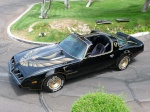
Country-Boy- Vrai de vrai

- Ville/Région : St-Jude
 Nombre de messages : 2992
Nombre de messages : 2992
Date d'inscription : 24/11/2007
Voiture(s) : Pontiac Trans-Am 1979... Chevy C10 1984...
 Re: 350 rocket
Re: 350 rocket
Si le moteur est d`origine, c`est un forcemment un 400 
_______________________________________________
Je ne suis pas tout à fait inutile. Je peux toujours être utilisé comme un mauvais exemple.

Fanamc- Légende

- Ville/Région : St Prosper (Mauricie)
 Nombre de messages : 9181
Nombre de messages : 9181
Date d'inscription : 30/01/2007
Voiture(s) : Jaguar XJ12 1973 Ford 1926
 Re: 350 rocket
Re: 350 rocket
https://servimg.com/view/12513880/1
https://servimg.com/view/12513880/2
https://servimg.com/view/12513880/3
j espere que sa marche voici des photo de mon chard j ai pas vus les chiffre que tu me parle mais je vais regarder plus attentivement temp tot merci
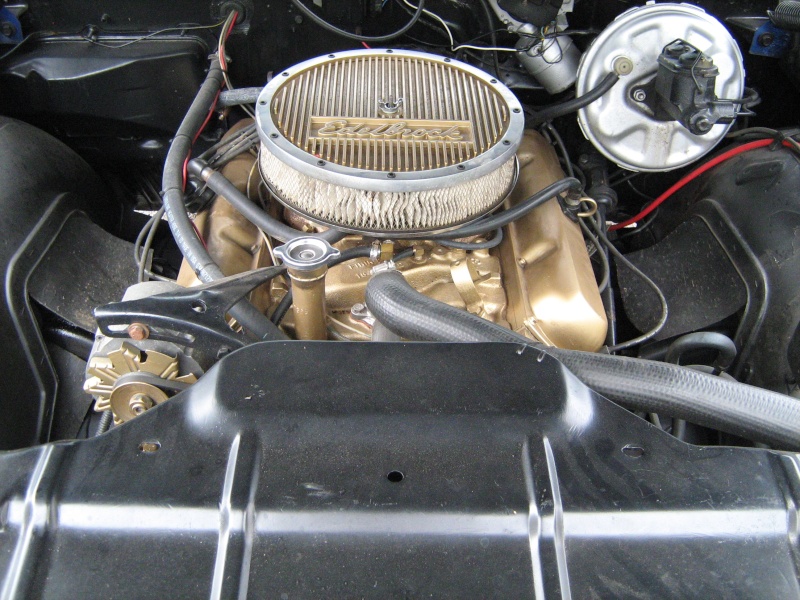
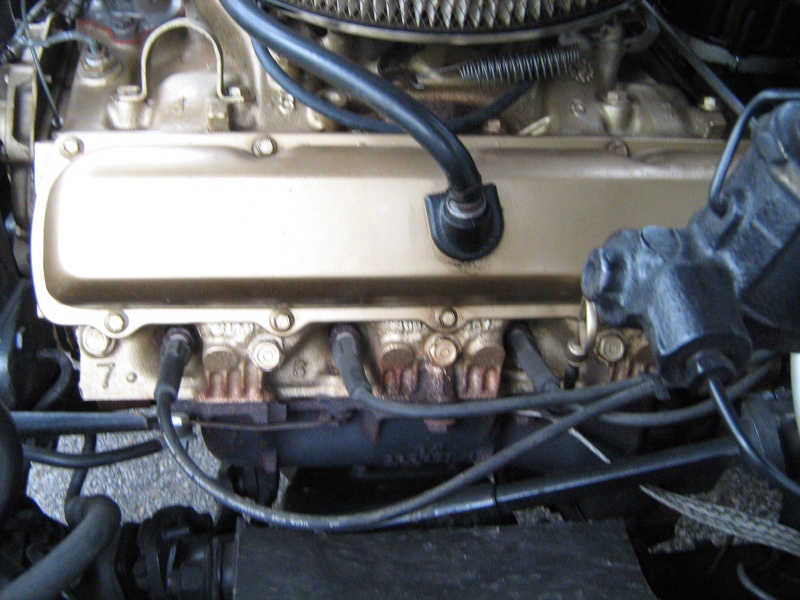

https://servimg.com/view/12513880/2
https://servimg.com/view/12513880/3
j espere que sa marche voici des photo de mon chard j ai pas vus les chiffre que tu me parle mais je vais regarder plus attentivement temp tot merci




cutlass 442- Mordu

- Ville/Région : lac-st-jean
 Nombre de messages : 472
Nombre de messages : 472
Date d'inscription : 02/06/2008

cutlass 442- Mordu

- Ville/Région : lac-st-jean
 Nombre de messages : 472
Nombre de messages : 472
Date d'inscription : 02/06/2008
 Re: 350 rocket
Re: 350 rocket
_______________________________________________
Je ne suis pas tout à fait inutile. Je peux toujours être utilisé comme un mauvais exemple.

Fanamc- Légende

- Ville/Région : St Prosper (Mauricie)
 Nombre de messages : 9181
Nombre de messages : 9181
Date d'inscription : 30/01/2007
Voiture(s) : Jaguar XJ12 1973 Ford 1926
 Re: 350 rocket
Re: 350 rocket
j ai trouver sur le coin de la tete ecrit tout petit 3a pis le numero acote du tube est 395558 2 aucune lettre seulment des chiffre

cutlass 442- Mordu

- Ville/Région : lac-st-jean
 Nombre de messages : 472
Nombre de messages : 472
Date d'inscription : 02/06/2008
 Re: 350 rocket
Re: 350 rocket
en passant t as un maudit beau moteur

cutlass 442- Mordu

- Ville/Région : lac-st-jean
 Nombre de messages : 472
Nombre de messages : 472
Date d'inscription : 02/06/2008
 Re: 350 rocket
Re: 350 rocket
Voilà la solution
ID/ Casting
Code Year(s) CID Number Notes
1 '64-'66 330 381917 45° cam bank angle.
1A 330 381917 45° cam bank angle.
2 '68-'76 350 381917
2 '68-'70 350 395558
3 '66-'67 330 394417 39° cam bank angle.
4
5 '73,'74 350 395558
2A '75-'81 260 Solid main webs for 2A's only? At least for '76.
2B ??-'81 260 557751 Windowed main webs. Windowed main webs for 2B's only?
3A '79 350
3B '77-'80 350 557752
4A '77 403 557265 Solid main webs possibly
553990 for these three
554990 casting numbers.
4B '77-'79 403 557265 Windowed main webs always.
?? '85 307 556607
5A '81- 307 3161
D3 350 7582 Diesel
Merci pour le moteur
ID/ Casting
Code Year(s) CID Number Notes
1 '64-'66 330 381917 45° cam bank angle.
1A 330 381917 45° cam bank angle.
2 '68-'76 350 381917
2 '68-'70 350 395558
3 '66-'67 330 394417 39° cam bank angle.
4
5 '73,'74 350 395558
2A '75-'81 260 Solid main webs for 2A's only? At least for '76.
2B ??-'81 260 557751 Windowed main webs. Windowed main webs for 2B's only?
3A '79 350
3B '77-'80 350 557752
4A '77 403 557265 Solid main webs possibly
553990 for these three
554990 casting numbers.
4B '77-'79 403 557265 Windowed main webs always.
?? '85 307 556607
5A '81- 307 3161
D3 350 7582 Diesel
Merci pour le moteur
_______________________________________________
Je ne suis pas tout à fait inutile. Je peux toujours être utilisé comme un mauvais exemple.

Fanamc- Légende

- Ville/Région : St Prosper (Mauricie)
 Nombre de messages : 9181
Nombre de messages : 9181
Date d'inscription : 30/01/2007
Voiture(s) : Jaguar XJ12 1973 Ford 1926
Page 1 sur 2 • 1, 2 
 Sujets similaires
Sujets similaires» 350 rocket
» un vrais rocket!
» PLEINE PUISSANCE : Les V8 Rocket de Oldsmobile
» ignition 350 Rocket
» info 350 rocket?
» un vrais rocket!
» PLEINE PUISSANCE : Les V8 Rocket de Oldsmobile
» ignition 350 Rocket
» info 350 rocket?
Tribune Auto :: Entretien :: Mécanique
Page 1 sur 2
Permission de ce forum:
Vous ne pouvez pas répondre aux sujets dans ce forum
 Activités 2024
Activités 2024 Facebook
Facebook Twitter
Twitter Instagram
Instagram Youtube
Youtube